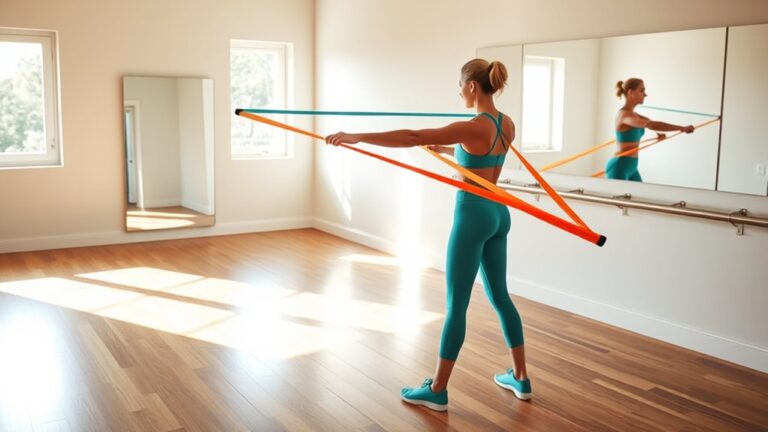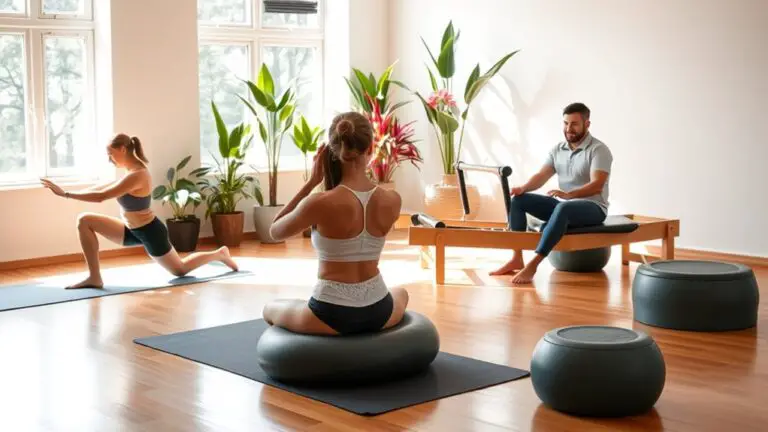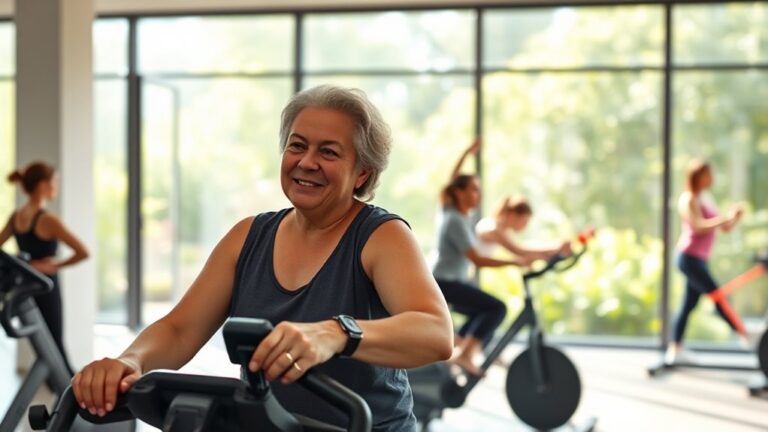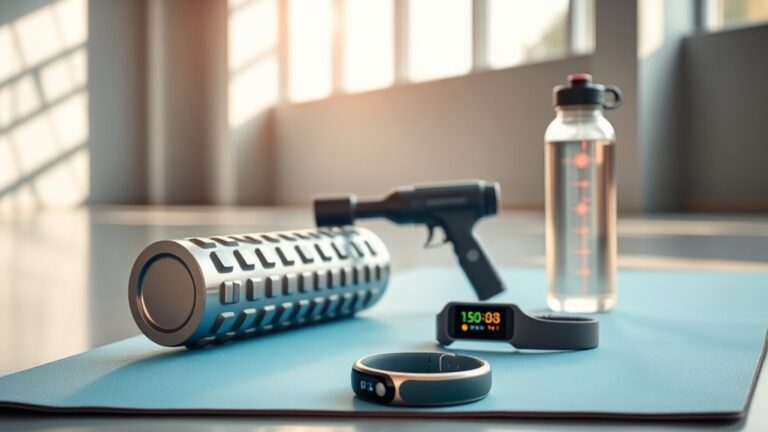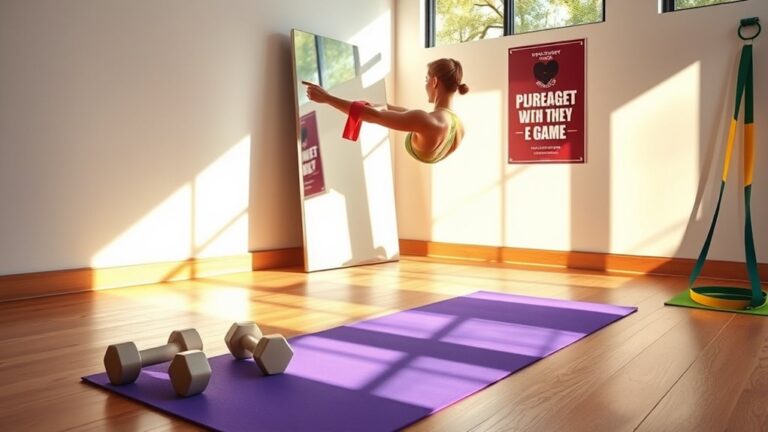The Best Post-Gym Stretches for Faster Recovery

Post-gym stretching is essential for faster recovery and flexibility. Focus on key muscle groups like your hamstrings, shoulders, and hip flexors. Effective static stretches include the seated hamstring stretch, standing quad stretch, and butterfly stretch, holding each for 20-30 seconds. Don’t forget dynamic stretches like leg swings and arm circles to enhance mobility. Consistency is key, so make this routine a habit. Keep going, and you’ll discover even more techniques to boost your recovery.
Benefits of Post-Gym Stretching
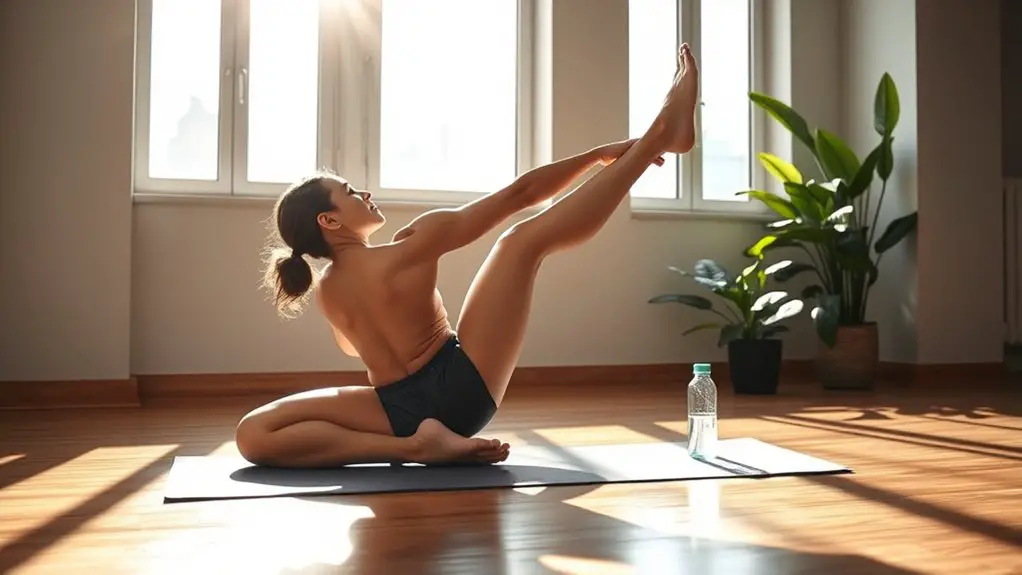
When you finish a workout, you might think about skipping those stretches, but incorporating post-gym stretching can considerably enhance your recovery. Stretching helps improve muscle flexibility, which is vital for maintaining a full range of motion in your joints. This increased flexibility can lead to better performance in future workouts and everyday activities.
Additionally, post-gym stretching plays an important role in injury prevention. By easing tension in your muscles and promoting blood flow, you reduce the risk of strains and sprains. Think of it as giving your body the care it deserves after pushing it to its limits.
Taking just a few minutes to stretch can make a significant difference in how your body feels the next day. So, don’t skip it! Make stretching an integral part of your routine, and you’ll reap the benefits of quicker recovery and enhanced overall performance. Moreover, incorporating rest days is crucial to avoid burnout and ensure you maintain a consistent workout routine.
Key Muscle Groups to Focus On
To maximize the benefits of your post-gym stretches, focus on key muscle groups that often bear the brunt of your workouts. Targeting these areas can aid in recovery and enhance your overall performance.
Maximize your post-gym recovery by stretching key muscle groups to enhance performance and prevent injuries.
- Hamstrings: Improving hamstring flexibility is vital, as tight hamstrings can lead to lower back pain and hinder your mobility.
- Shoulders: Prioritizing shoulder mobility is essential for upper body movements and helps prevent injuries.
- Hip Flexors: These muscles support your legs and pelvis; keeping them flexible can improve your range of motion and reduce tightness. Incorporating post-workout static stretches into your routine can further enhance muscle recovery and flexibility.
Effective Static Stretches for Recovery
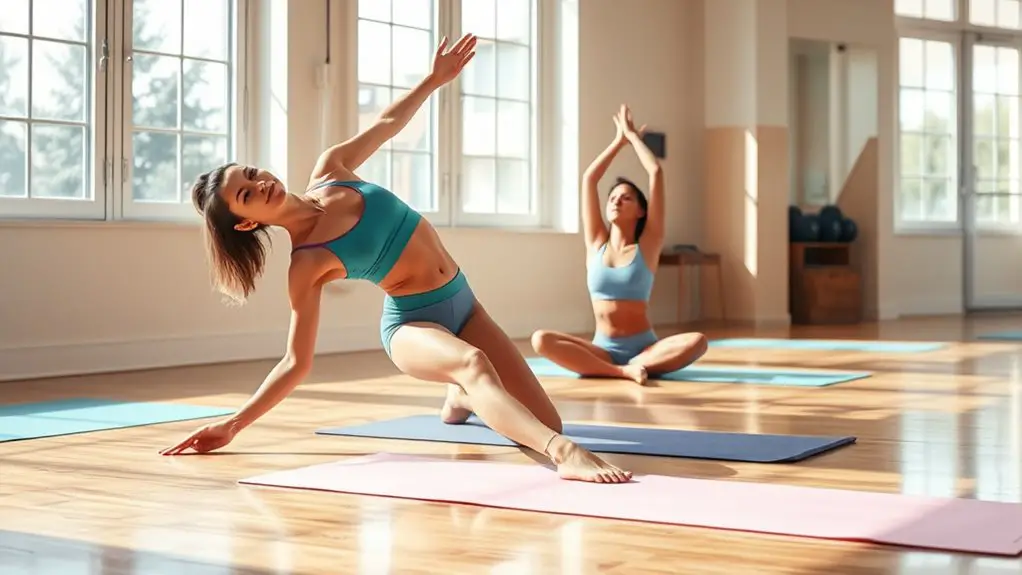
Incorporating effective static stretches into your post-gym routine can greatly enhance recovery and prevent stiffness. After an intense workout, your muscles need time to relax and lengthen. Try static stretch variations like the standing quadriceps stretch, seated hamstring stretch, or butterfly stretch to target key muscle groups. Holding each stretch for 20-30 seconds allows your muscles to release tension and improves flexibility.
Moreover, integrating these injury prevention techniques into your cooldown can help you avoid future setbacks. Focus on deep breathing while you stretch, as this promotes relaxation and helps your body recover more efficiently. Remember to pay attention to areas that feel particularly tight, and don’t rush through your stretches. By dedicating time to static stretching after your workouts, you’re not only enhancing recovery but also setting yourself up for better performance in the long run. Make it a habit, and your body will thank you!
Dynamic Stretching Techniques After Workouts
While static stretches are essential for recovery, incorporating dynamic stretching techniques after workouts can greatly enhance your overall flexibility and mobility. These dynamic flexibility movements help your muscles recover more efficiently while preventing stiffness. Plus, they can make your post-gym routine more enjoyable and engaging.
Consider these dynamic stretching techniques:
- Leg Swings: Swing your legs forward and backward, promoting hip flexibility.
- Arm Circles: Rotate your arms in large circles to improve shoulder mobility.
- Torso Twists: Gently twist your torso side to side to loosen your core and back muscles.
Creating a Post-Gym Stretching Routine
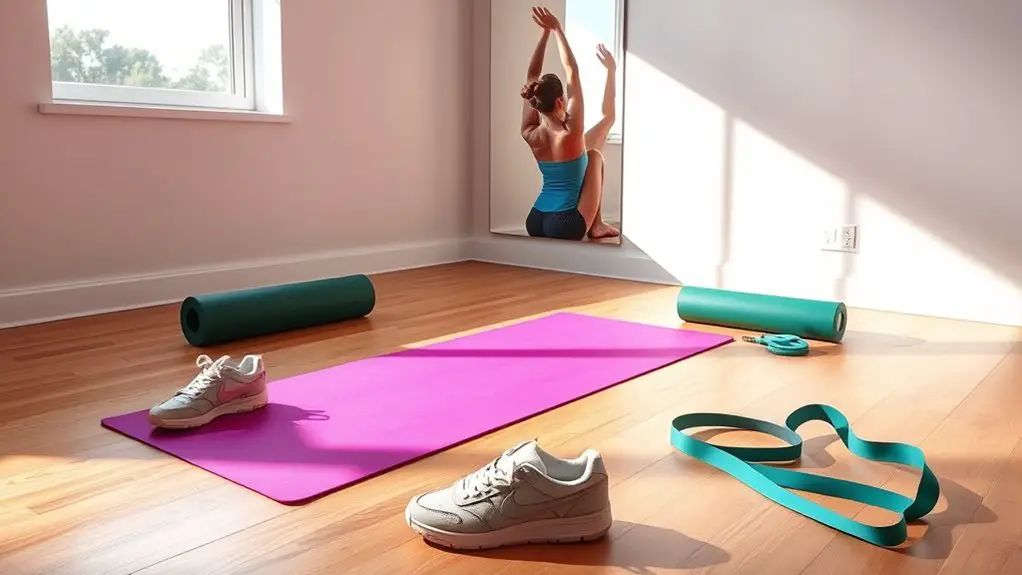
Creating a post-gym stretching routine can make a significant difference in your recovery process, especially when you focus on targeting the muscles you’ve just worked. To maximize your results, aim for consistency in your routine and a regular stretching frequency. Here’s a simple table to help you structure your post-gym stretches:
| Muscle Group | Stretch Type | Duration |
|---|---|---|
| Hamstrings | Seated Forward Bend | 30 seconds |
| Quadriceps | Standing Quad Stretch | 30 seconds |
| Shoulders | Cross-Body Stretch | 30 seconds |
| Lower Back | Cat-Cow Stretch | 30 seconds |
Incorporate these stretches into your routine right after workouts. By doing so, you’ll enhance flexibility, reduce soreness, and promote quicker recovery. Make this routine a habit, and you’ll notice the benefits in no time!
Frequently Asked Questions
How Long Should I Hold Each Stretch?
You might think holding a stretch for too long isn’t necessary, but stretch duration is key for maximizing stretch benefits. Aim for 15 to 30 seconds per stretch to effectively lengthen muscles and improve flexibility. If you’re feeling tight, try holding a bit longer. Remember, consistency is essential; incorporating this into your routine can enhance recovery and performance. So, take a moment, breathe, and give your body the care it deserves!
Can I Stretch if I’m Sore?
Yes, you can definitely stretch if you’re sore! Stretching can be a valuable part of your soreness management and recovery techniques. It helps improve blood flow, which can aid in healing and relieve tightness. Just remember to listen to your body—opt for gentle stretches rather than intense ones. This’ll not only alleviate discomfort but also enhance your flexibility. Keep moving, and you’ll feel better as you recover from your workout!
What Should I Avoid While Stretching?
When you’re stretching, there are a few things you should avoid. Don’t rush through your movements; take your time to guarantee proper form. Avoid bouncing during static stretching, as it can lead to injury. If you’re doing dynamic stretching, steer clear of overly aggressive motions that can strain your muscles. Listen to your body, and remember that stretching should feel good, not painful. Stay mindful, and you’ll enhance your flexibility safely.
Is It Better to Stretch Before or After Workouts?
When it comes to stretching, it’s generally better to do dynamic stretching before your workout. This warms up your muscles and prepares them for activity. After your workout, static stretching is key for cooling down and improving flexibility. It helps your muscles relax and recover. So, remember, dynamic stretching pre-workout gets you ready, while static stretching post-workout aids in recovery. Balance both for ideal performance and results!
Can I Use Foam Rollers Instead of Stretching?
Absolutely, you can use foam rollers instead of traditional stretching! Foam rolling offers numerous benefits, like improving circulation and reducing muscle soreness. It’s a great stretching alternative that targets tight areas effectively. By incorporating foam rolling into your routine, you’ll enhance flexibility and promote faster recovery. Just remember to listen to your body; if something feels too tight, spend a bit more time on that area to release tension and aid recovery!
